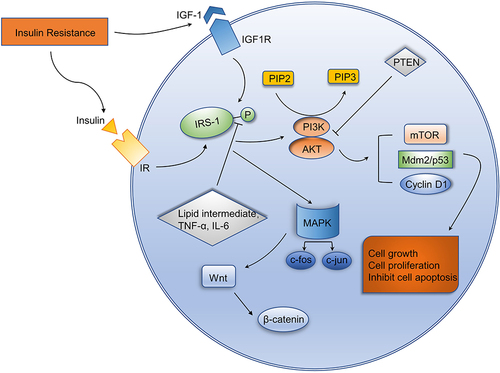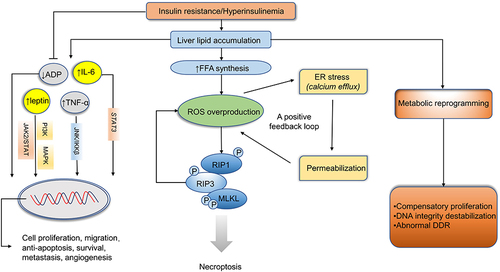Figures & data
Figure 1 Molecular signaling pathways of insulin resistance in hepatocarcinogenesis. Activation of downstream signaling pathways is indicated by lines ending with arrows whereas inhibition of them is indicated by blunted lines.

Figure 2 Mechanism of lipid accumulation and oxidative stress in liver tumorigenesis. Long lines ending with arrows or bars indicate activating or inhibitory effects respectively. Short arrows pointing up or down indicate up-regulated or down-regulated.

Figure 3 The role of intestinal microbiota dysbiosis and inflammatory response in hepatocarcinogenesis. Lines with arrows or bars are used to indicate facilitation or inhibition.

